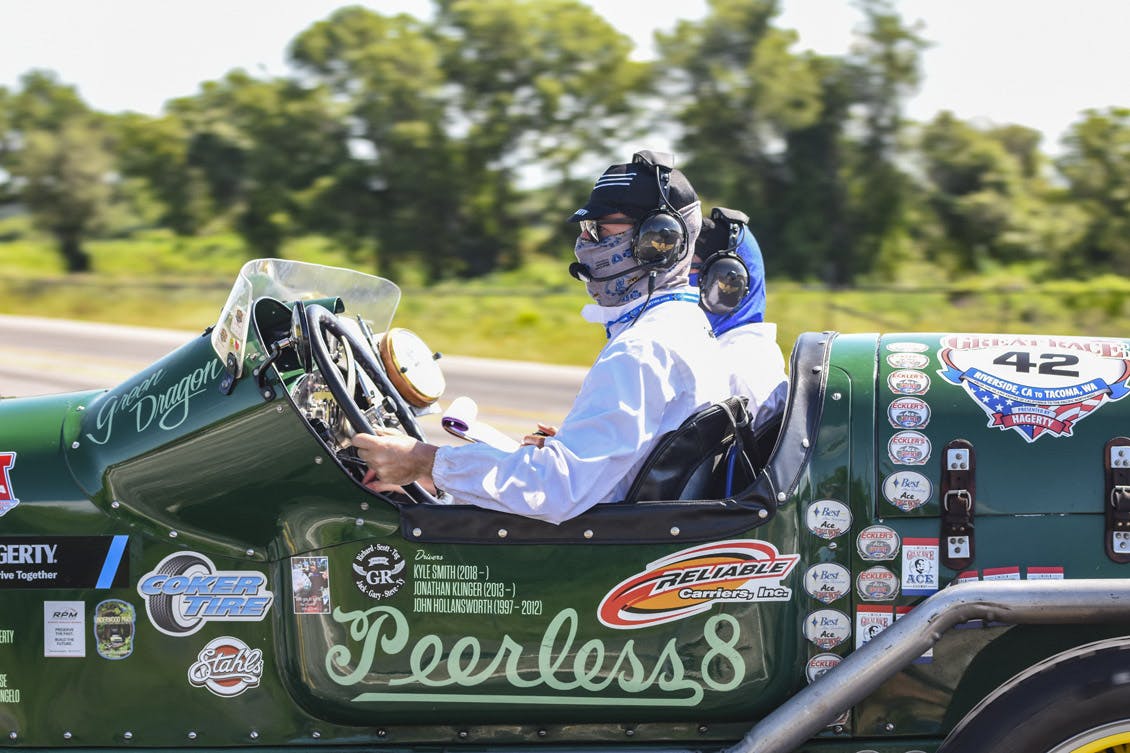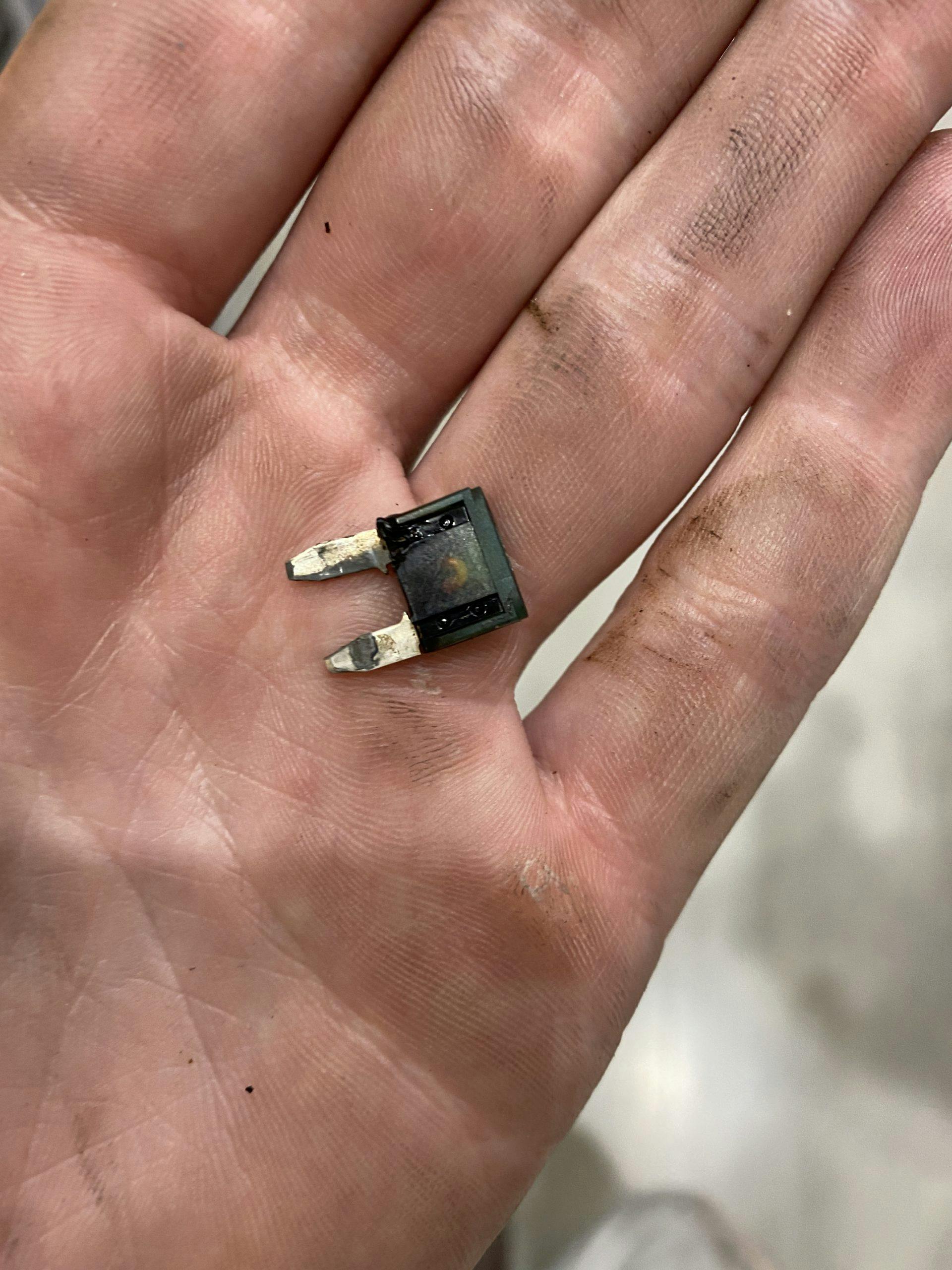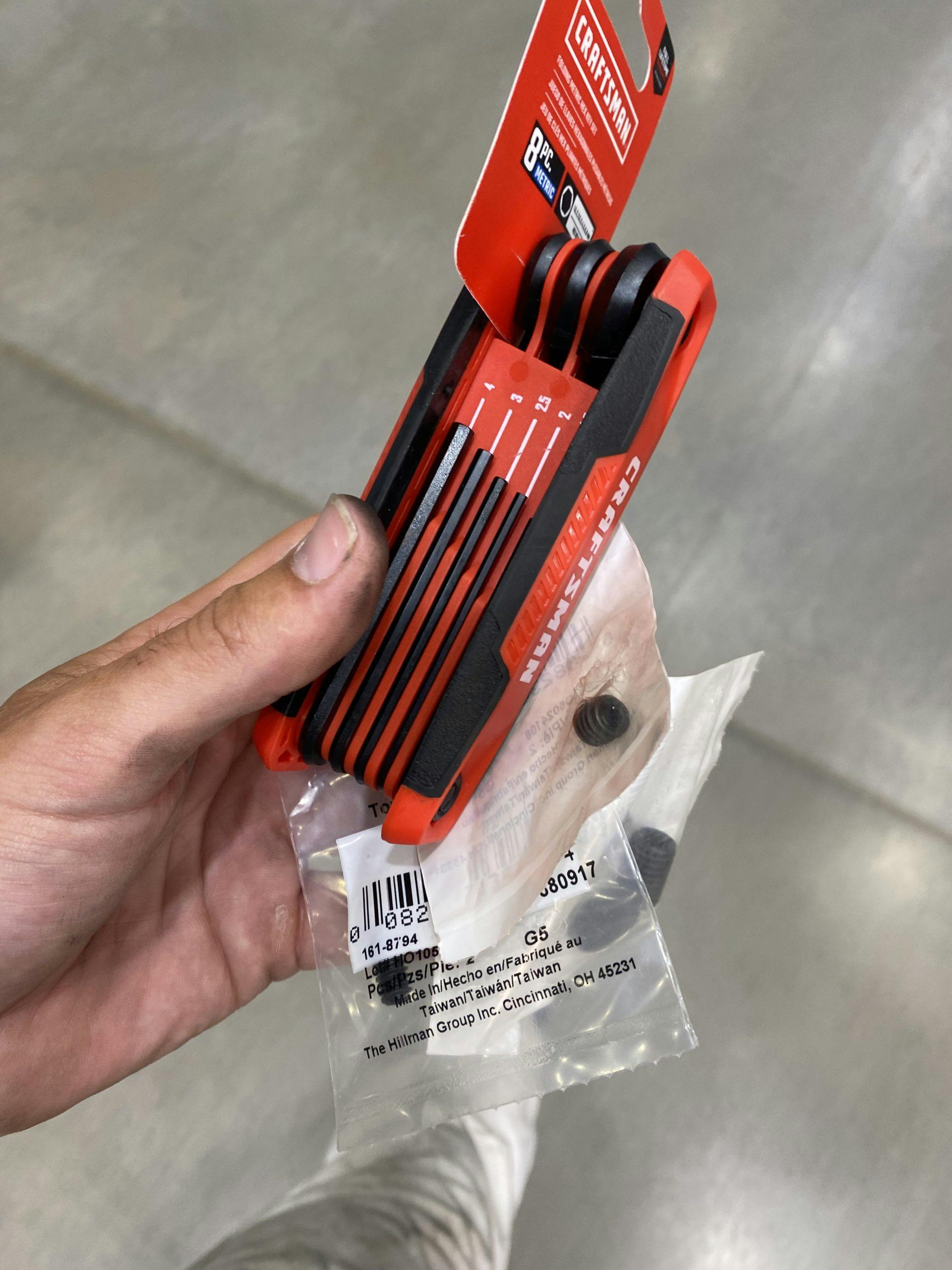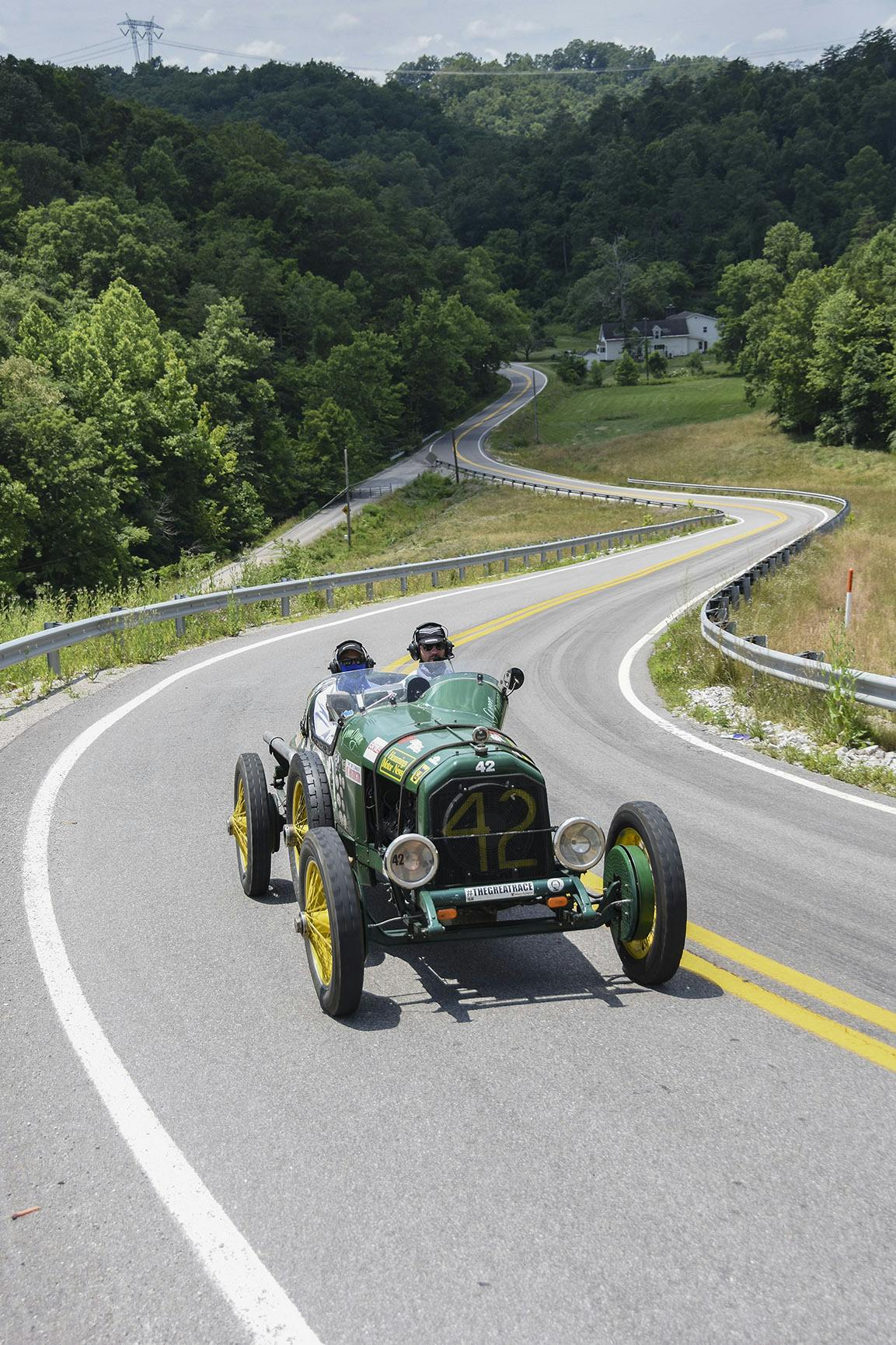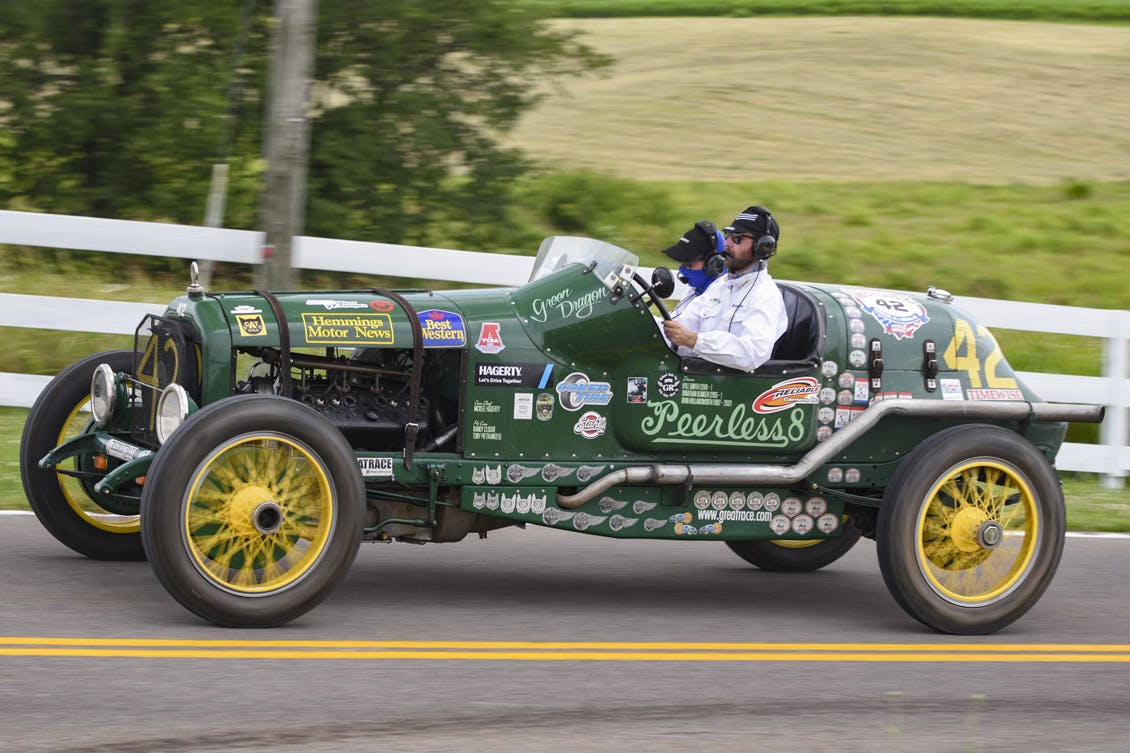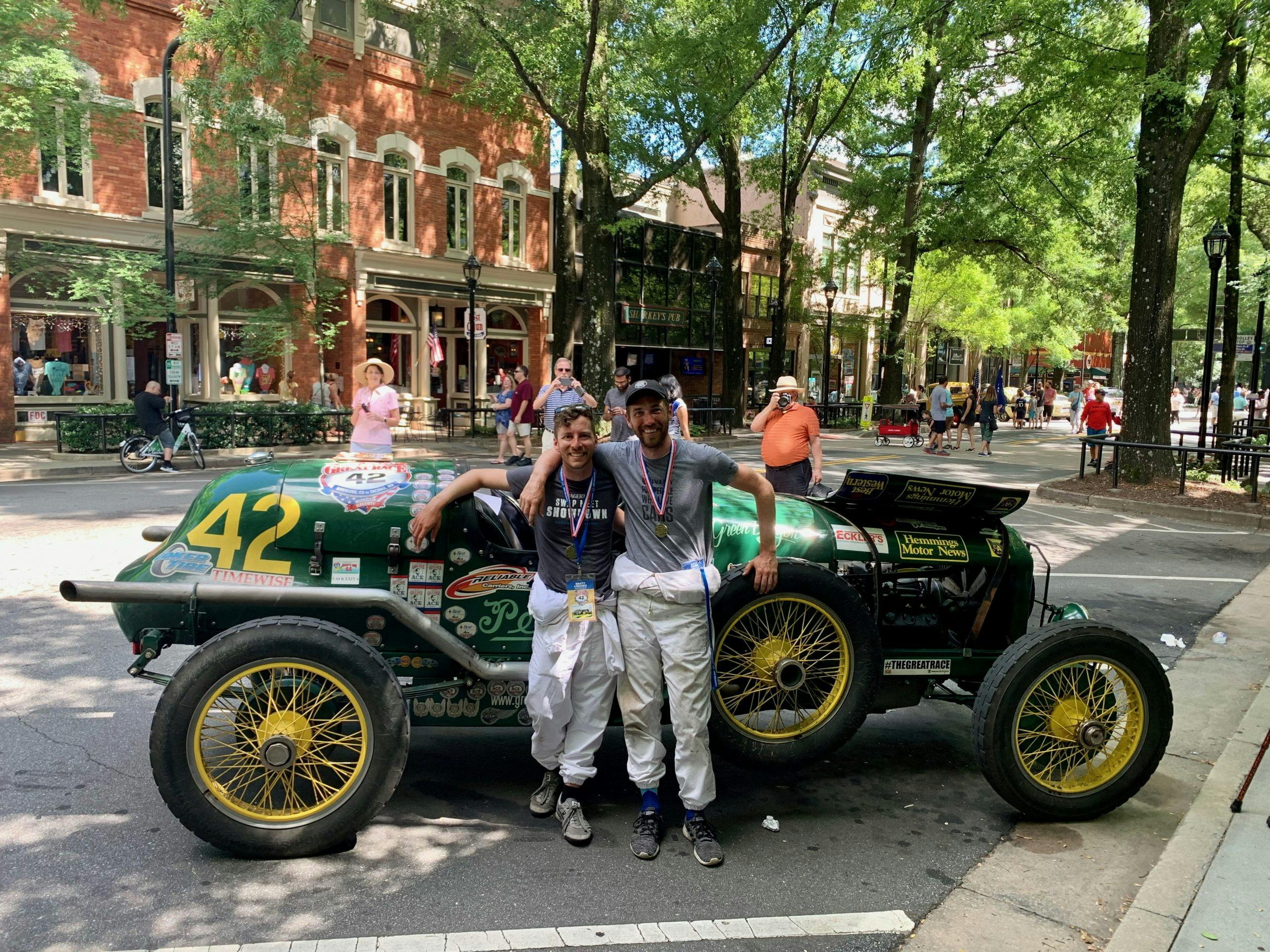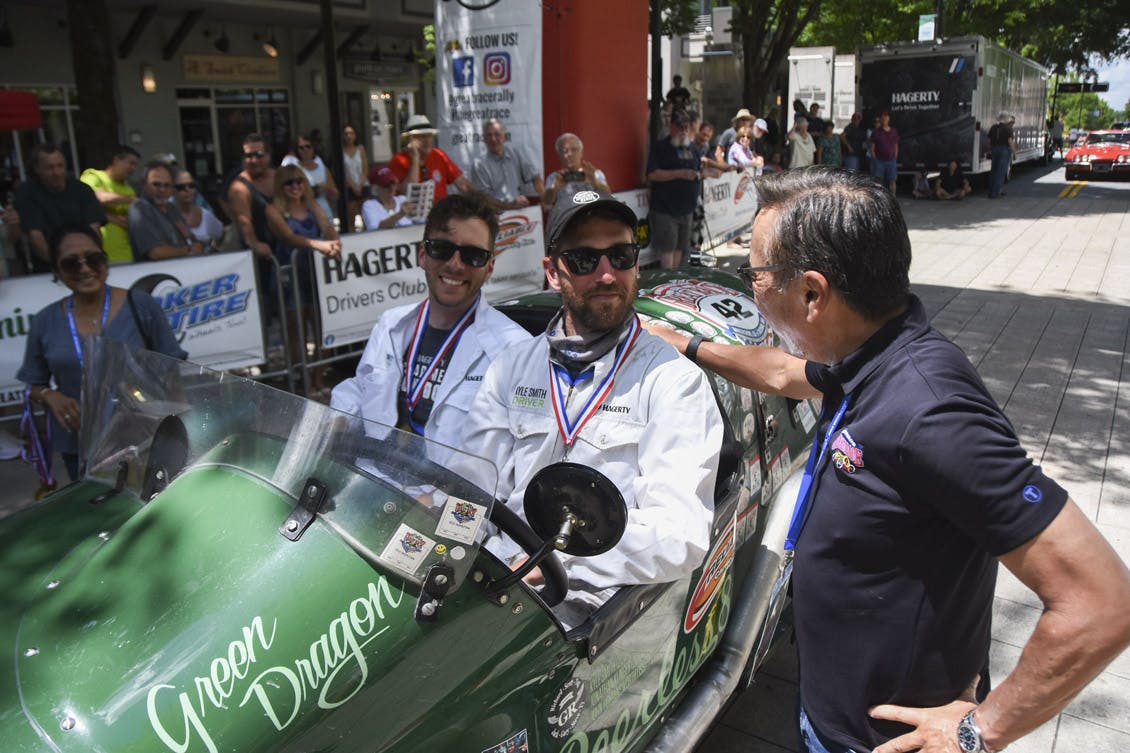Limping the Green Dragon to the 2021 Great Race finish line taught me a lesson
Rallying an old car is one thing. Rallying a 104-year-old speedster is an entirely different one. There is nothing forgiving or easy about covering 2500 miles in the Peerless, V-8-powered Green Dragon. I knew this, but the most recent trip on the Great Race was a reminder that even the most well-sorted cars are still nothing more than a conglomeration of wear items conspiring against the person just looking to have fun. This sounds harsh, but I promise it’s true—and especially so if you are taking the competition too seriously for your own good.

This was the third Great Race my navigator Brett and I have weathered with this car, which means we know enough to be dangerous. The car is a veteran, though. It has been wheeled through a big rally like this every year since 1997. It has never been a true competitor for first place, but the motto “to finish is to win” cemented itself in my head the first time I attempted this event. How hard could it really be to drive around at 30 to 50 mph all day?
Really hard. The odyssey is also quite hard on equipment, which is why I spent a significant amount of time on the side of the road in 2021 despite the Peerless boasting over 150,000 miles of rallying under its wire-spoke wheels.
The Great Race isn’t the sort of “race” most imagine when they hear that word. It’s all time-speed-distance rallying. This challenges the driver to perform consistent, precise actions. The navigator has to not only interpret the sometimes-cryptic instructions, but also properly calculate the time loss incurred by the stated maneuvers. Right turn at stop, hold 40mph for two minutes, accelerate to 50mph, turn at first paved road. Mess up one part of that and you are headed the wrong way real quick. The rallymaster sets checkpoints on the day’s route, and the driver and navigator pair do their best to drive through those checkpoints on time. That is all before traffic enters the situation and conspires to ruin your perfectly laid plans.
Great teams rely on experience and cooperation to handle frustrating situations. Encountering a slow-moving vehicle in a no-passing zone? There are a couple ways to handle that and stay on time; all of them involve communication between driver and navigator plus a good bit of math.
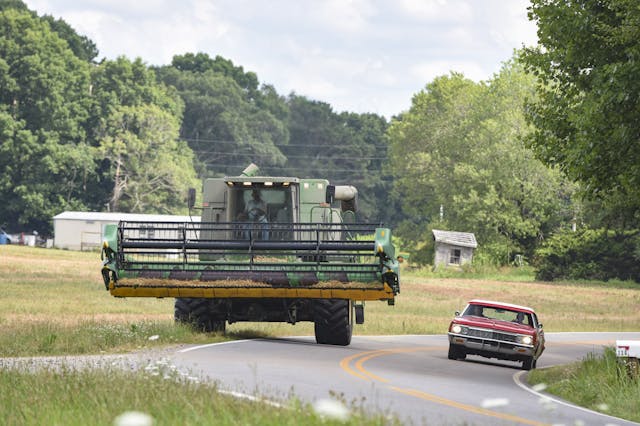
All this shakes down to a game of seconds for those who are really good. The biggest thing to remember is that there are three team members, and each one has to do its job to pull the whole thing together. The driver and navigator could do everything flawlessly, and the car can leave you hanging. Such is the tale of team Green Dragon’s 2021 Great Race.
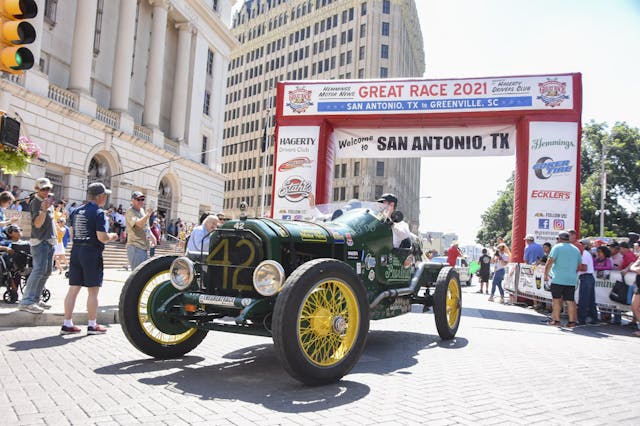
This run, the start of the rally was San Antonio, Texas. The Peerless V-8 is a big lump of iron that, when worked hard, gets warm and stays warm for a long time. With the lack of insulation on the firewall and the exhaust routing located right under the aluminum floor, the cockpit gets toasty, and quickly. I like to joke that at the end of the day Brett and I are perfectly done turkeys—we’ve been cooked at 200 degrees for 8 to 10 hours. Hydration goes a long way in keeping sane, but we also had a Coolshirt system that helped keep our core temperatures in check by circulating ice water through tubing stitched to a t-shirt. Emphasis on “had,” because on the first day of the rally the innards of 12V pump that pushed that ice-cold relief through the tubes broke. I band-aid fixed it and got it to work sporadically for another day, but by the end of day two it was 100 percent useless.
As we were acclimating to the Texas and Oklahoma heat inside the Peerless, it decided to throw another wrench in our plan. Driving along at 40 mph, Brett called out for me to accelerate to 50 mph as directed by the instructions. I put my right foot down but, rather than the guttural roar the straight-piped, 330-cubic-inch V-8 normally releases with that action, we were met with a whimper, a sputter, and slight backfires. I immediately flipped the two dash-mounted switches to change from the fuel pump I thought was dying to the spare fuel pump that was wired and plumbed in series for just this situation.
It was no help. Any throttle input was met by the sound of an engine trying its best to die. It would idle fine, though, and by the time we had bled enough speed to come to a safe stop I swung into a driveway for diagnosis. Like any 104-year-old engine, the Peerless is simple—but simple should not be confused with bulletproof. After pulling the fuel line from the carburetor and confirming there was plenty of fuel flow, and deciding the car was not acting as though the carb was clogged, I was forced to remember what a wise man once told me: “90 percent of your fuel problems are ignition.”
The original distributor is long gone, with a Ford dual-point unit in its place. The package is very snug to the bifurcated exhaust manifolds, meaning that even inspecting things is an exercise in how many times can you burn your hands before you start cussing like a sailor. Just as I was about to dig in, a truck swung in next to us and a seemingly unimpressed man said, “If you’re having trouble, you oughta just pull down the driveway—the shop is open and there’s tools in there.” An invitation I will never turn down.

The shade gave me a clearer head as I inspected both sets of points, pulled a spark plug, and looked for any signs of arcing or carbon tracking in the cap. Nothing stood out. Cooling things down didn’t help either–which would have pointed to an overheating coil. Then I remembered the humble condenser. A pair of them are mounted to the side of the dizzy, and their failure symptoms exactly matched the car’s current behavior.
Scrounging in our small box of spares yielded a good, used set and another, new pair. Both of the units attached to the distributor had bulged bottoms, a classic sign they had failed. One Phillips-head screw loosened and re-tightened, and we were in business—approximately 34 minutes late, but back in business nonetheless. We thanked Jim for opening his garage to us and kindly denied his offer of a cold beverage and conversation in the hopes that we could still stitch together a decent day of rallying. We arrived at dinner that night happy to be under our own power.
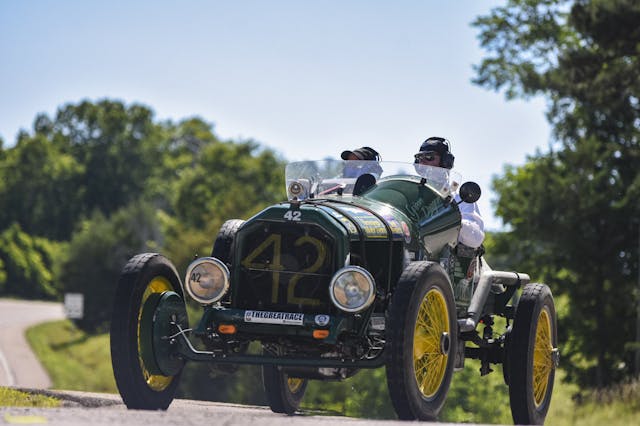
We enjoyed another two days of rallying before problem number three struck. The car has a very simple wiring harness, as it is a bare-bones car. So when a rattle developed on the front of the engine during our speedometer calibration on day eight and the ammeter on the dashboard wouldn’t leave zero, I knew exactly what was wrong. The original generator is long-gone and in its place is an alternator that has been adapted to fit the PTO-style front drive. A new battery was installed not long before the Peerless was loaded in the trailer bound for Texas, so I knew we could probably drive all day since the points ignition really doesn’t require much energy to keep the engine turning. The trouble would be keeping things cool and persuading them not to self-destruct.
There was a set screw missing on the alternator snout, and the custom-machined pieces were attempting to tear themselves apart. Luckily there was a hardware store just off from the gas station where we stopped to get a look at things and we scrounged up an appropriate screw and a few other items to hold everything together for the day. The real issue was that the big 20-amp electrical fan on the front of the radiator, which would suck the life out of the battery in fairly short order. We stared down a miserable day with a Peerless that, without the fan, would be trying its best to overheat. Shutting down the car wouldn’t be an option. Brett and I conferred with each other and arrived at two choices:
- Call our support crew and load the car in the trailer. We would then be done with Great Race for 2021.
- Call the Great Race support truck and have them pick us up with their trailer. We would be done for the day, but could patch things up overnight and still finish the rally as scored participants.
We sat in the parking lot in silence. We knew our options, and neither of us would be first to admit defeat. Then I realized there was a third option. We didn’t know what the day might bring—and hidden in that uncertainty was faint hope. There could be a fairly easy day of driving ahead, one that would not overwork the car and thus avoid overheating. Option number three became our clear choice: Rally as far as we could while keeping the car safe. If the temp gauge moved over 190 degrees, we would shut it down and call it a day. We agreed on the plan, started the car, and set out to the day’s first restart point 38 minutes late.
Over seven hours later we arrived at dinner with the car still running. No meltdown. No push starts. A good bit of anxiety filled the day, but some stress is good for the body, right? (I’ll just keep telling myself that.) We put the battery on a charger over night rather than replacing the dead alternator, because logic told us that the last day of rallying would only be a few hours long, and we knew the car would be fine for that amount of time. The chance that something had gone amiss during alternator swap was too high: The wiring was cooked, with insulation falling off in chunks and mismatched connectors peppering the harness. Our strategy was set: Limp it to the finish line and then totally address the problem at home in the convenience of our home shop.
It’s important to balance some of this negative talk with a very important disclaimer: We still had a great time, sort of. That second failure of the car happened during “championship days,” which means it really hammered our score and dropped us from contenders in the Sportsman category to mid-pack overall.
However, the banner over the finish line reads To Finish Is to Win. I used to think that finishing was just a consolation prize; now, with my 66 percent success rate at finishing Great Race, I realize that’s far from the truth. Nearly 2500 miles in vintage machinery is an epic journey, even without the failures and patchwork mechanical fixes we experienced. Friendship is based on shared experience, and thanks to this journey I now have 450 or so new friends that were all part of this fantastic rally.
Maybe I was taking the competition side of the rally a bit too seriously. Very few of us are going to remember the finish order, but we all will recall the laughs, smiles, and miles of scenery. That is what it’s all about.


